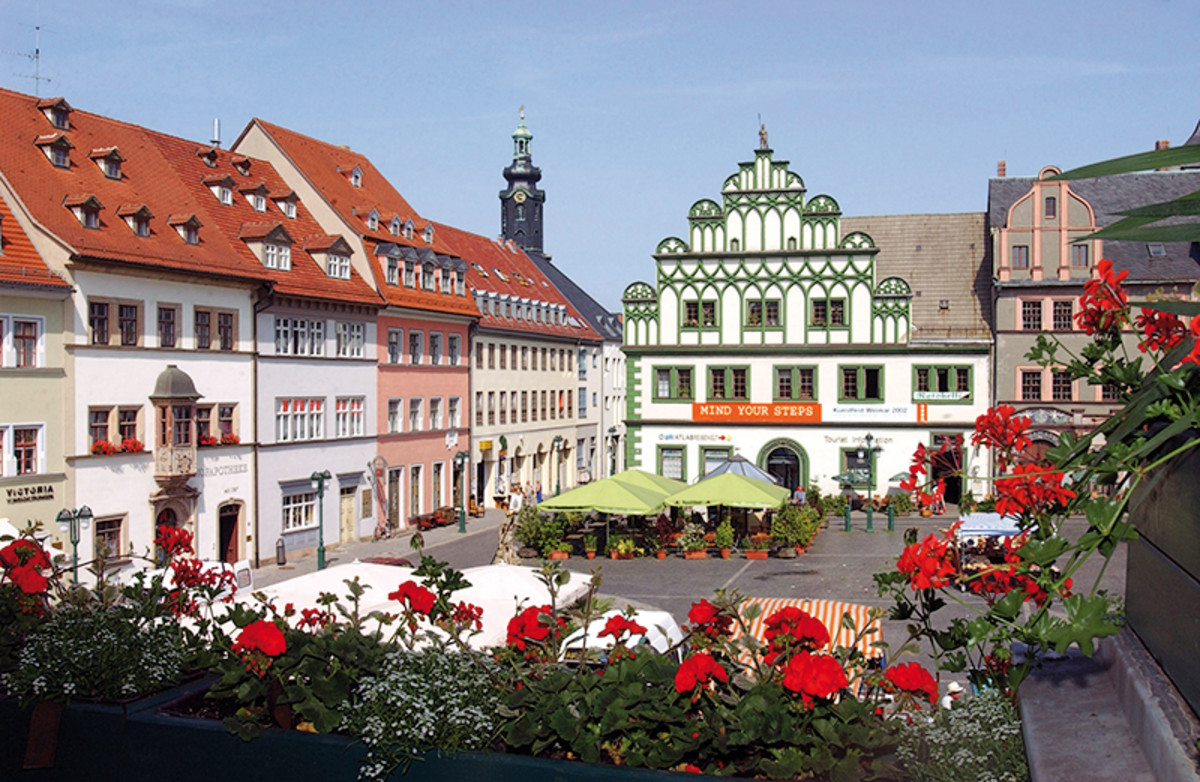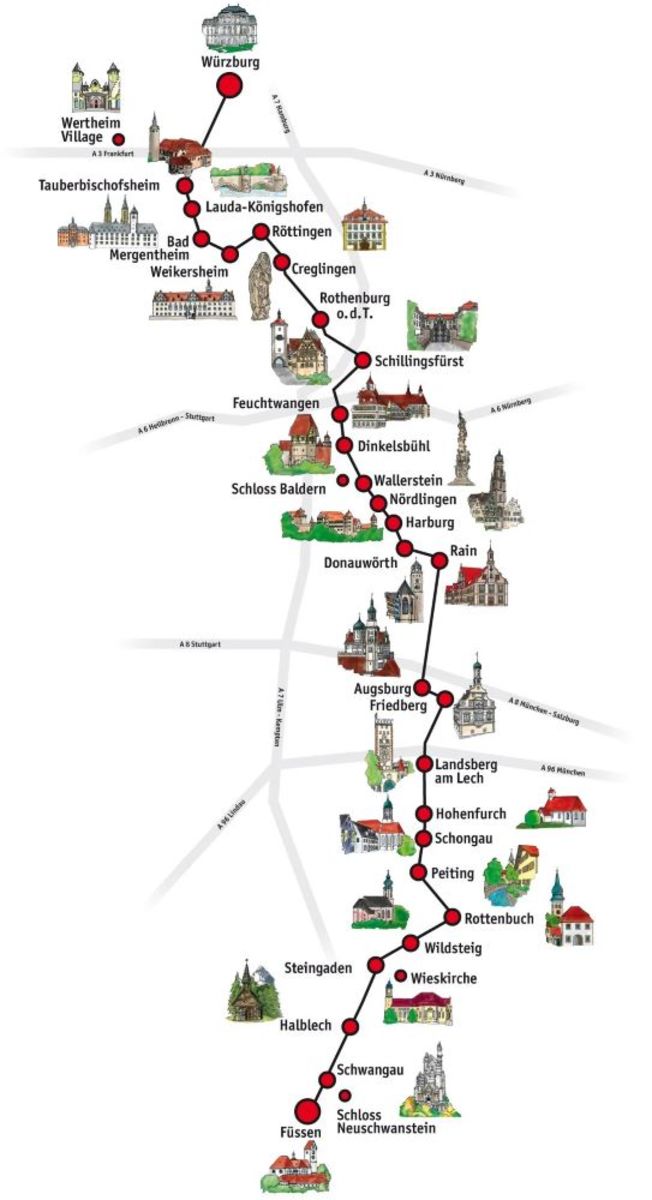Visiting the Jesuitenkirche, Trier, Germany: recalling the killing of William the Silent, subtle theology, and Karl Marx


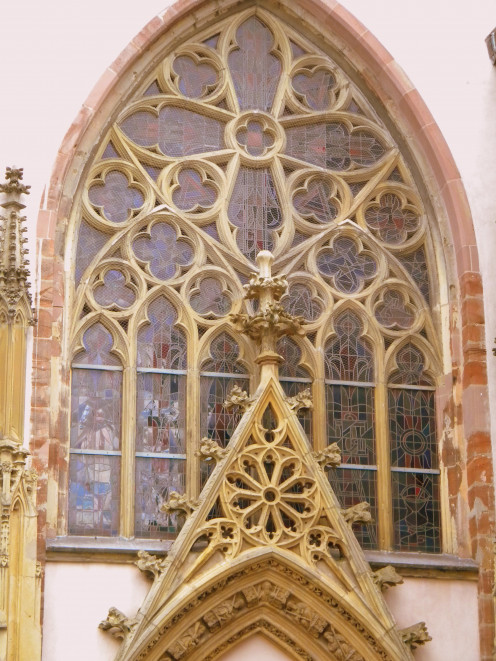
Rationalizing religion and reasons of state
This chuch building is located at Jesuitenstrasse 13, Trier, Germany. Often referred to as the Jesuitenkirche, its association with the Jesuit order lasted from the 16th to the 18th centuries; previously the building had been linked with the Franciscan order.
The building dates from the 14th century. While the Jesuit Fathers had already departed before the French Revolution, it was during this tumultuous period that the building was appropriated for secularist ceremonies. It was also used as a Protestant church in the 19th centuries and for a short period was even used simultaneously as a venue for Roman Catholic and Protestant services. More recently it reverted to Roman Catholic use.
Features of the building include: a window in Gothic style, with ornate stone tracery, and a matching Gothic doorway; the grave of religious poet Friedrich Spee, Count von Langendorf (1591-1635)(1); a stained glass window by Reinhard Hess (1904-1998). In the adjoining building is a college for the training of priests.
At the end of the 20th century the building underwent a program of refurbishment.
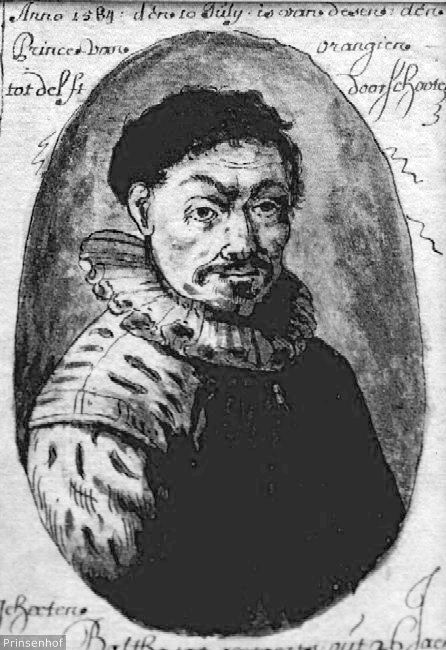
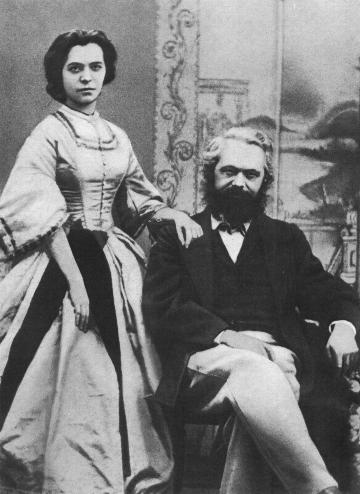
Startling historical associations
The building has some interesting — even startling — associations with historically significant individuals.
For example, it was here that Bathasar Gérard (2) met with some Jesuit Fathers in relation to his plan to assassinate William the Silent; in turn, he was referred to Alexander Farnese, Governor of the Spanish Netherlands and later Duke of Parma, who further encouraged him in his plan.
So in a religious age how did one justify such an act which, on the surface, might have seemed offend basic morality and negated claims of spirituality among anyone involved in such plans?
Well, this is where some subtle theology came into play. For example, historically, Protestants have interpreted the Bible's strictures regarding repentance as involving an avoidance of acts injurious to basic morality: thus, a contrite attitude precluded participating in and planning such acts. But sometimes, though, interpretations of Roman Catholic theology have been more sutble. Here into play comes the concept of being attrite, rather than contrite. There might not seem to be much of a difference between professing to have a contrite or an attrite attitude. But, whereas a contrite heart involves sorrow at sinful, criminal acts and a forsaking of such acts also, an attrite heart, on the other hand, may involve some measure of regret at the nature of the act contemplated but also an acceptance of its necessity, as perceived. Thus also, in extreme circumstances, even assassination can be supposedly justified within such a subtle and flexible framework of theology,
This is not to say that, particularly in Western countries, such arguments would likely be widely held and voiced in Roman Catholic circles today; but, rather, the existence of such reasoning in the past sheds light somewhat upon the way historic, political conflicts have sometimes revolved around the theoretical reasoning that the end justifies the means.
Thus in 1584, the act was planned and, thus, the deed was done. On July 10, 1584, at the Prinsenhof, in Delft, Holland, Bathasar Gérard shot and killed William the Silent, and was making progress to escape, but fatefully he tripped and was apprehended. A grisly fate awaited the assassin: he was slowly tortured to death, his body horribly mutilated.
Another interesting historical personalty connected with the building is Karl Marx (1818-1883), who was born in the city. In 1834 he was here confirmed in the faith. (As is well known, he was later to have somewhat of a significant change of heart.)
As one considers the effects of Communism worldwide and the strong degree of secularism with which Marx's thinking is closely associated, it is perhaps hard to envisage a young man in 1834 attending a religious service in this building. Indeed, under régimes professing Communism, large numbers of Christian believers have been persecuted. I suppose one might say (to modify conventional terminology here) that the event at this building in 1834 must have been 'an undefining moment' in the life of Karl Marx.
Trier is situated in the Rhineland-Palatinate (Germany: Rheinland-Pfalz) state of Germany.
June 25, 2013
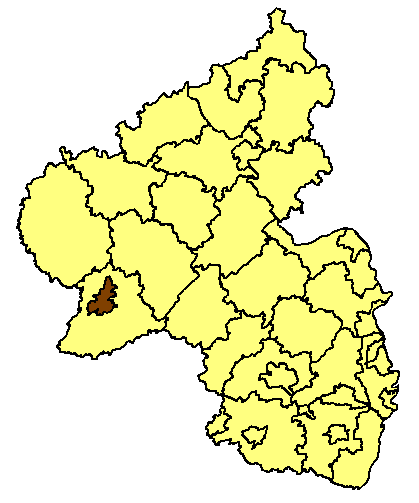
Notes
(1) Count von Langenfeld was noted for his efforts in defence of women accused of witchcraft.
(2) Sometimes known as Balthasar Geeraerts, which reflects the Dutch spelling of this Frenchman's name.
Also worth seeing
In Trier itself, the Porta Nigra dates from Roman times; the Aula Palatina, or Constantine's Basilica, dates from the 4th century; St. Peter's Cathedral (German: Trierer Dom) is Germany's oldest cathedral; there are ruins of Roman baths, a Roman amphitheatre and a Roman bridge: the city is situated in the picturesque Mosel Valley .
...
How to get there: Lufthansa flies to Frankfurt-am-Main, from where car hire is available. The nearest large international airport to Trier is Luxembourg (Aéroport de Luxembourg ), at Findel. For North American travellers making the London, England area their touring base, airlines flying to Luxembourg include Luxair (from London Heathrow Airport and London City Airport) and CityJet (from London City Airport). Please refer to appropriate consular sources for any special border crossing arrangements which may apply to citizens of certain nationalities.
MJFenn is an independent travel writer based in Ontario, Canada.
Other of my hubpages may also be of interest
- Visiting an amazing piece of Roman real estate in Trier, Germany: the Porta Nigra
- Visiting Nennig, Saarland: preserved Roman remains near the Mosel River, Germany
- Visiting Waldhof-Falkenstein: memories and illusions from Rhineland-Palatinate, Germany
- Visiting Pruem, Germany: impressive ecclesiastical architecture in the Eifel region
- Visiting the Nieuwe Kerk, Delft, The Netherlands: towered structure long associated with Dutch Royal


